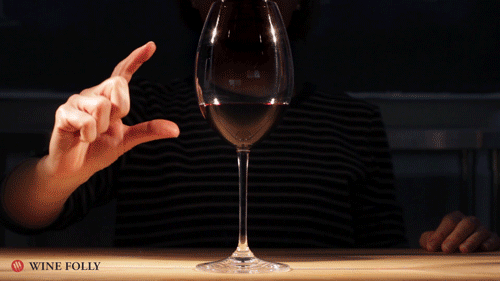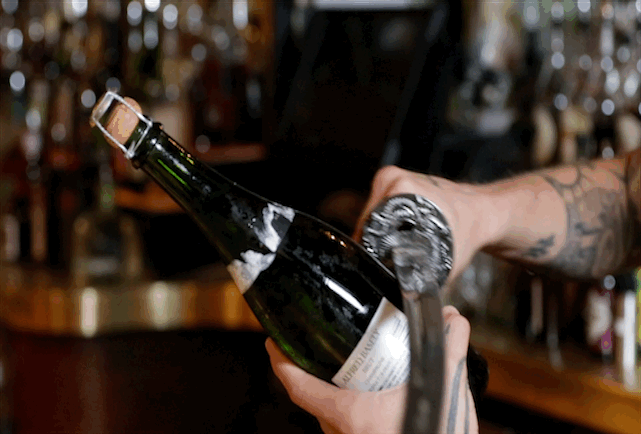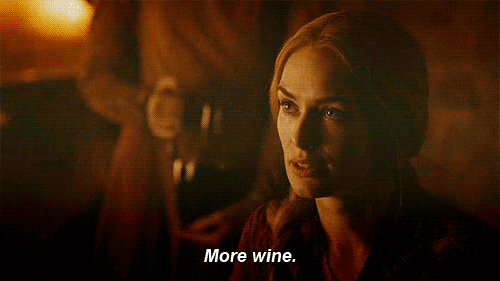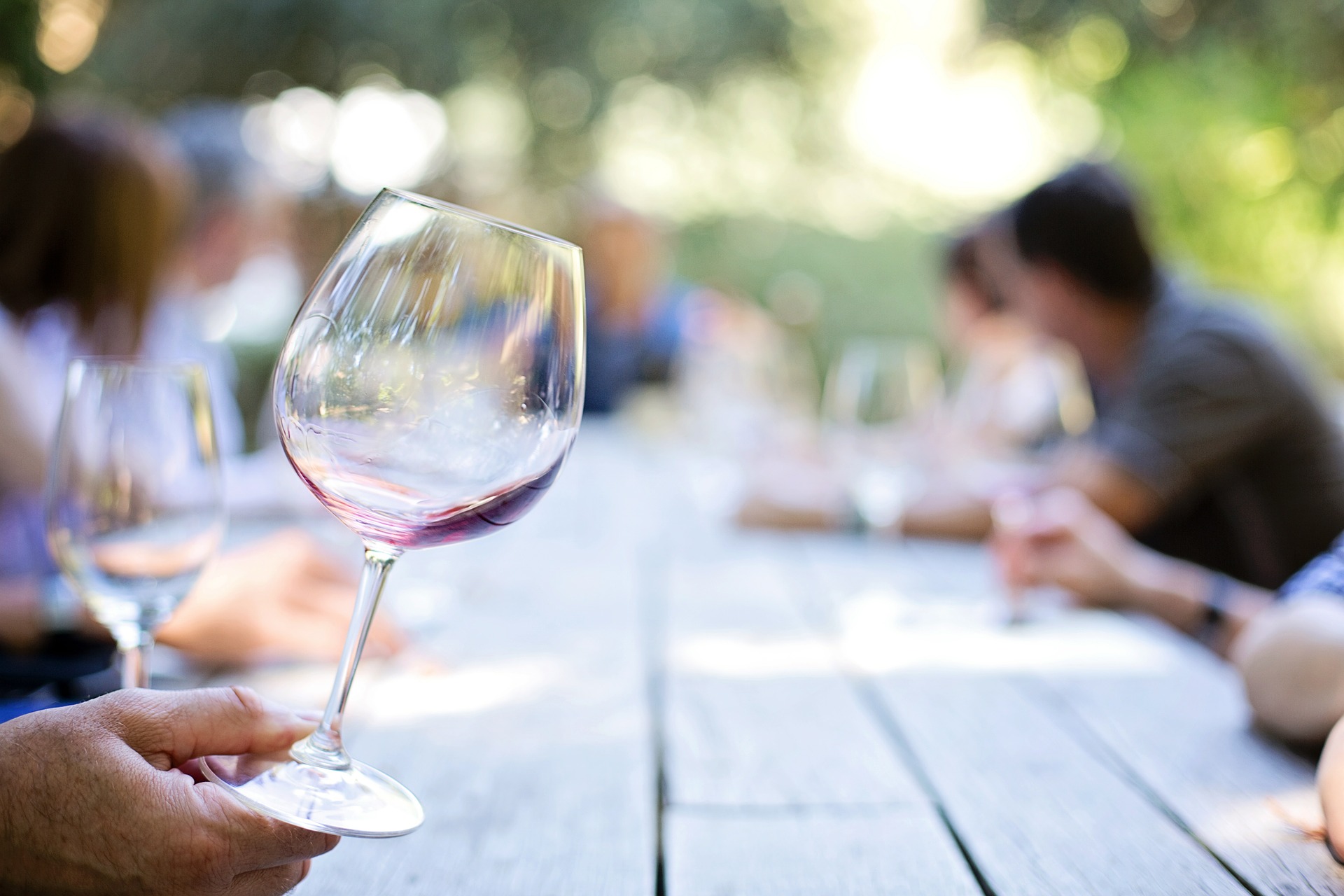May 25 was National Wine Day, and even if you missed your chance to pop open your favorite bottle of vino, we’ve got you covered.
 Nothing pairs quite as well with content marketing as a good metaphor, so in honor of this lesser-known holiday, we’re putting our palates to the test and matching 10 different types of content with their most compatible wines. Why, you ask? Well, “wine” not?
Nothing pairs quite as well with content marketing as a good metaphor, so in honor of this lesser-known holiday, we’re putting our palates to the test and matching 10 different types of content with their most compatible wines. Why, you ask? Well, “wine” not?
But there actually is method to my madness here. When you know more about different kinds of wines, you can pick out the perfect match for any meal to impress your friends, right? The same idea resonates with content. Each type serves a different purpose and is more suitable than the others for different marketing goals. Knowing when and why to choose a shiraz over a Chianti, or a blog over a graphic, will lead to winning results.
1. Listicles: The wine coolers of content.
People love lists – just look at Buzzfeed’s success. They’re palatable, accessible to everyone and ever-popular despite sometimes carrying a stigma of lower quality. Listicles tend to be lighthearted, quick and easy to read, just as wine coolers are enjoyable and refreshing for a summer barbecue on a warm day.
Post listicles with some caution, however. Just as all the sugar in wine coolers can lead to upset stomachs, too many listicles can turn readers off.
2. How-tos: Add a splash of cooking sherry for flavor.
The whole purpose of a how-to article is to allow your readers to go off and create something new on their own. Cooking sherry is a natural companion for a how-to blog, as you use it to create flavorful dishes in the kitchen. Plus, just as some chefs may take a sip while they cook, writing a how-to can teach you a thing or two about your business, or at least keep you sharp and up to date on your industry.
3. Analytical commentary: Save your best bottles for your sommeliers.
 This content type, much like a well-aged wine, is for a more discernible palate. The high-level insight a thought-leadership piece is designed to deliver is especially targeted for the connoisseurs of your industry. Those among your audience in the earlier stages of the buyer’s journey may not be as savvy to the subtle nods of flavor and aroma of a well-thought-out analysis, but someone immersed in your industry will get more out of it and develop a deeper respect for you when you share the perfect bottle.
This content type, much like a well-aged wine, is for a more discernible palate. The high-level insight a thought-leadership piece is designed to deliver is especially targeted for the connoisseurs of your industry. Those among your audience in the earlier stages of the buyer’s journey may not be as savvy to the subtle nods of flavor and aroma of a well-thought-out analysis, but someone immersed in your industry will get more out of it and develop a deeper respect for you when you share the perfect bottle.
4. Email marketing: Just like cabernet sauvignon, it’s the fan favorite.
By and large, cabernet sauvignon is the most popular wine choice, so it stands to reason it fits the profile of email marketing. Emails prove time and again to be the most effective way to reach your audience. When done right, they have high open and click-through rates, and tend to be more than worth the investment. In fact, on average, emails bring in roughly $38 of revenue for every $1 spent.
To ensure you appeal to the most people, email, like a bottle of cabernet sauvignon, is the way to go. Wow the crowds even more by using personalized emails as you would wine glass charms, to target your audience individually.
5. Social marketing: Grab your punch bowl, this is a sangria worth sharing.
When you’re hosting a big party, a punch bowl of fresh sangria is always a hit. The drink is designed for sharing, and like social marketing, there are lots of ingredients that go into a tasty sangria. Social media is not a set-it-and-forget-it marketing tool. You need to fine-tune your recipe by adding in images, hashtags, links and more to get it just right. When you do, and the compliments start flowing, be a gracious host and thank everyone for their kind words.
6. Video: The universal appeal of a dry white.
Dry white wines pair well with so many different dishes, just as effective videos work well in countless situations. Videos can be serious and informative, like a formal business dinner, or they can be more casual and fun like happy hour with friends at a local cocktail bar. A moderate flavor like that of a chardonnay can have a broader appeal, much like an animated video that showcases the top features of a new service. Something exceptionally dry, like a sauvignon blanc or a walkthrough of how a company makes its products, may be preferred by a more targeted audience.
7. Graphics: Sweet white wines that go down easily.
 People are drawn to graphic design for many reasons, but the ability to easily comprehend their message without committing to reading an article or watching a video gives them a broad appeal that you don’t get in any other content type. Sweet wines like riesling, and even the bubbly prosecco, are a lot like wine coolers – everyone can enjoy them, even people exploring wine (or your products) for the first time. A good infographic, like a nice glass of moscato, should be easy to read and leave your readers clamoring for another sip.
People are drawn to graphic design for many reasons, but the ability to easily comprehend their message without committing to reading an article or watching a video gives them a broad appeal that you don’t get in any other content type. Sweet wines like riesling, and even the bubbly prosecco, are a lot like wine coolers – everyone can enjoy them, even people exploring wine (or your products) for the first time. A good infographic, like a nice glass of moscato, should be easy to read and leave your readers clamoring for another sip.
8. EBooks: Smooth to the taste but full of flavor.
With larger assets, like eBooks and whitepapers, we get into the red wine family. Why? Because reds tend to pair best with heartier dishes. When it comes to eBooks, they’re almost half a step between infographics and whitepapers, so I find them to be most like malbecs. A good malbec is smooth but still robust, just as an eBook should be easy to peruse while still delivering a solid message.
9. Whitepapers: As rich and robust as a hearty Bordeaux.
Whitepapers are perhaps the most complex content you can create, so where else would you class them but in the red wine family? A good Bordeaux, thought to be “structured” with acids and tannins, may be the closest match for a strong whitepaper. But really, any robust red – an intense pinot noir or an elegant merlot – will showcase the different layers of flavor in a good cut of steak, just as a whitepaper is your chance to really explore the many ingredients of an in-depth topic.
10. Press releases: Only break them out for big news
 Champagne is not an everyday beverage. You pop a bottle open for special occasions – holidays, birthdays, weddings. If Champagne was your drink of choice every time you wanted to unwind with an “adult beverage,” it would lost its luster pretty quickly.
Champagne is not an everyday beverage. You pop a bottle open for special occasions – holidays, birthdays, weddings. If Champagne was your drink of choice every time you wanted to unwind with an “adult beverage,” it would lost its luster pretty quickly.
Press releases are very much the same. They should be reserved for special occasions, like releasing a new product or announcing an upcoming event or sale. They should never make up the majority of your content. Not every company milestone needs to be celebrated publicly with a bottle of bubbly.
If your business happens to release a lot of new products, host events often or promote sales, look to other content types to promote them. Sangria’s fizzy splash of seltzer might make social media promotion a good route to take for advertising a sale, and prosecco could be perfect if you can create a graphic to get the word out about an upcoming event.
Bonus: Treat your blog like you would a wine cellar
 Just as a wine enthusiast would not stock a wine cellar with only rosé or exclusively zinfandels, your blog should never heavily feature one type of content. A respectable wine cellar will showcase a mix of as many different varieties as possible. It should still suit your tastes, so if your passion lies in the white wine family, your cellar will have more whites than it will reds. The same holds true for your blog – a SaaS provider will likely have more whitepapers than listicles, while a B2C business might be the complete opposite.
Just as a wine enthusiast would not stock a wine cellar with only rosé or exclusively zinfandels, your blog should never heavily feature one type of content. A respectable wine cellar will showcase a mix of as many different varieties as possible. It should still suit your tastes, so if your passion lies in the white wine family, your cellar will have more whites than it will reds. The same holds true for your blog – a SaaS provider will likely have more whitepapers than listicles, while a B2C business might be the complete opposite.
Disclaimer: While Brafton certain does condone the creation of great content, we do not, in any way, endorse drinking in the workplace. Create content, then go home and crack open a bottle of whatever suits your fancy.




